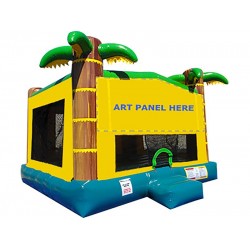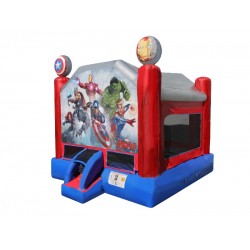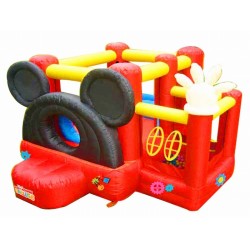Can You Set Up a Bounce House in Hot Weather?

Hot weather can make outdoor activities like using a bounce house more challenging, but with proper precautions, it is possible to set up a bounce house in high temperatures. However, special care should be taken to ensure the safety of children and to prevent heat-related issues. Here’s how you can safely set up a bounce house in hot weather.
1. Choose the Right Location
The location of the bounce house plays a big role in managing heat:
- Shade: Set up the bounce house in a shaded area if possible, such as under trees or a canopy, to protect the inflatable from direct sunlight and keep it cooler for the kids.
- Avoid Direct Sunlight: If shade isn’t available, consider using a tarp or portable tent to provide some cover from the sun.
2. Use Water Features or Cooling Accessories
Water can help keep the bounce house cool and make it more enjoyable in hot weather:
- Water Slides: If your bounce house has a water slide or pool attachment, make use of it to provide relief from the heat.
- Misting Systems: A misting system or hose attachment can spray a fine mist over the bounce house, keeping the surface cool and refreshing for kids.
3. Monitor Surface Temperature
In hot weather, the surface of the bounce house can get very warm:
- Check for Heat: Before allowing children to play, touch the surface of the bounce house to ensure it isn’t too hot.
- Cool Down the Surface: Use cool water or a towel to wipe down any areas that are too warm to ensure kids won’t burn themselves on the hot surface.
4. Hydration and Breaks
Staying hydrated and taking regular breaks is essential when playing in hot weather:
- Provide Water: Ensure that children have easy access to water and encourage them to drink frequently to avoid dehydration.
- Scheduled Breaks: Plan regular breaks to allow children to cool down and rest, especially during the hottest part of the day.
5. Watch for Heat-Related Symptoms
It’s important to keep an eye out for signs of heat exhaustion or heatstroke in children:
- Symptoms of Heat Exhaustion: Watch for signs like excessive sweating, dizziness, headaches, or nausea, and have children rest in a cool area if these occur.
- Immediate Action: If a child shows symptoms of heatstroke, such as confusion or rapid heartbeat, seek medical attention immediately and move them to a cooler environment.
6. Use Heat-Resistant Materials
When setting up a bounce house in hot weather, make sure the inflatable is made from durable, heat-resistant materials:
- UV-Resistant Vinyl: Many commercial-grade bounce houses are made with UV-resistant vinyl to prevent overheating and damage from the sun.
- Regular Inspection: Check the material for signs of heat damage, such as cracking or fading, to ensure it remains safe for use.
Conclusion
Setting up a bounce house in hot weather can be done safely if you take the necessary precautions. By choosing a shaded location, monitoring the temperature, providing hydration, and using cooling accessories, you can create a fun and safe environment for children, even in the heat. Always prioritize safety and watch for any signs of heat-related issues during playtime.




Leave a Comment